#green algae
Text
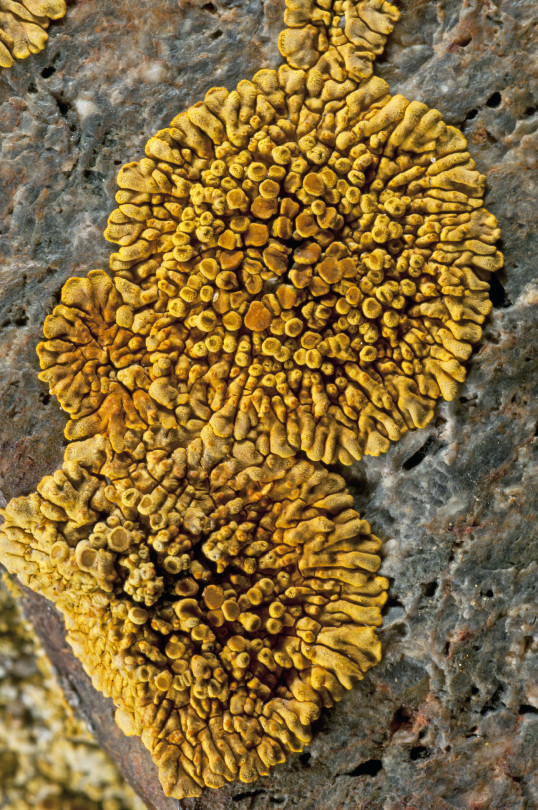
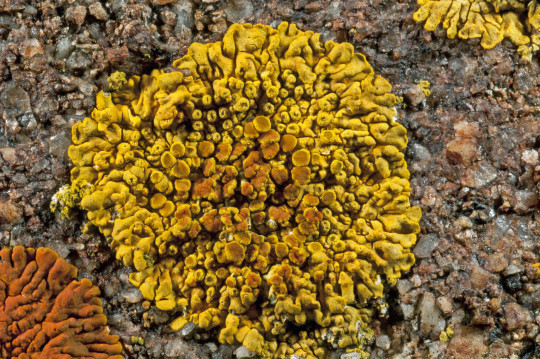
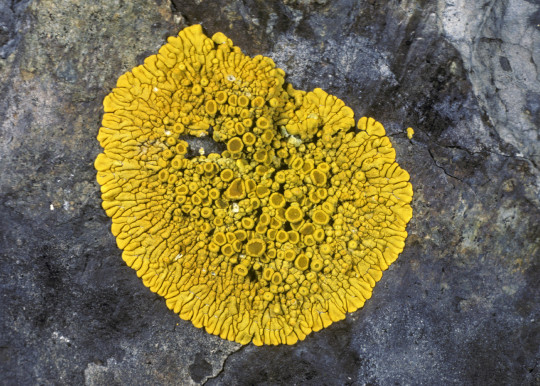


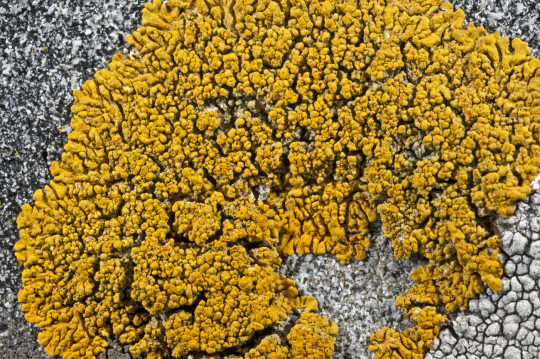
Polycauliona impolita
When I tell people that I study lichens and they respond "Oh, those little moss-looking things, right?" I want to show them pictures like these and be like "Does this look like moss to you?" But usually I am too nice and too excited to explain what a lichen is to do that. But not today! Does P. impolita look like moss to you? I think not! This crustose-placodioid lichen grows in rounded patches with an areolate (tile-like) central thallus and a marginal thallus of elongated lobes. The upper surface is yellow-orange to red-orange and often pruinose (covered in a fine powder), with orange, flat-disked apothecia clustering toward the center. P. impolita grows on non-calcareous rock in western North America.
images and info: source
#lichen#lichens#lichenology#lichenologist#mycology#ecology#biology#symbiosis#symbiotic organisms#green algae#fungus#no moss here#nature#naturalist#beautiful nature#weird nature#the natural world#natural science#life science#environmental science#fungi#trypo#tw: trypophobia#Polycauliona impolita#Polycauliona
370 notes
·
View notes
Text
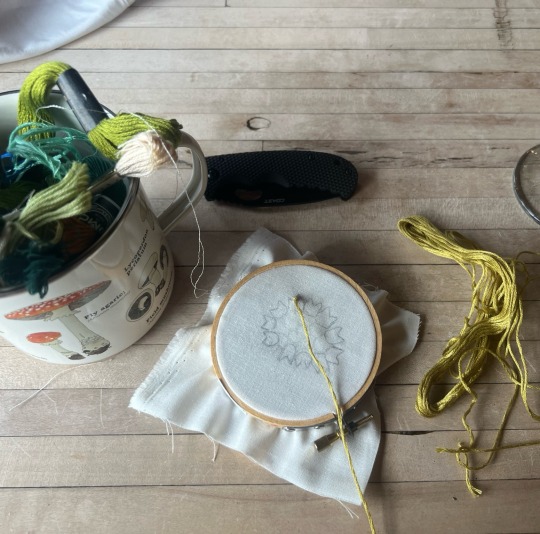


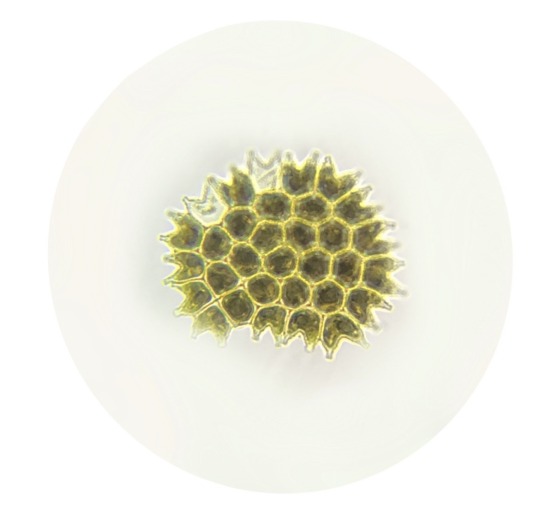
2nd attempt at Pediastrum! I’m liking this one a lot better so far. The cell walls are done with a split-stich, which I think looks really cool. It’s fairly easy as I’m learning new stitches.
#phycology#green algae#pediastrum#freshwater algae#fiber art#fiber arts#embroidery#scientists that do art#artists on tumblr
90 notes
·
View notes
Text
Stoked to have the 3.0 finally!
48 notes
·
View notes
Text

#pink#pinkcore#pink aesthetic#cute#pink core#cute aesthetic#aesthetic#pastel pink#pink everything#pink tumblr#creepy aesthetic#pink hair#pink wig#moss#mosscore#green algae#odd#odd core#oddcore
21 notes
·
View notes
Text
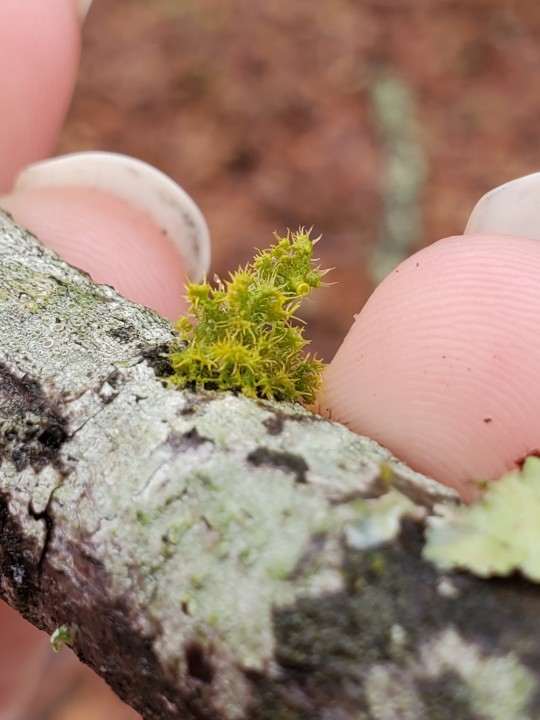




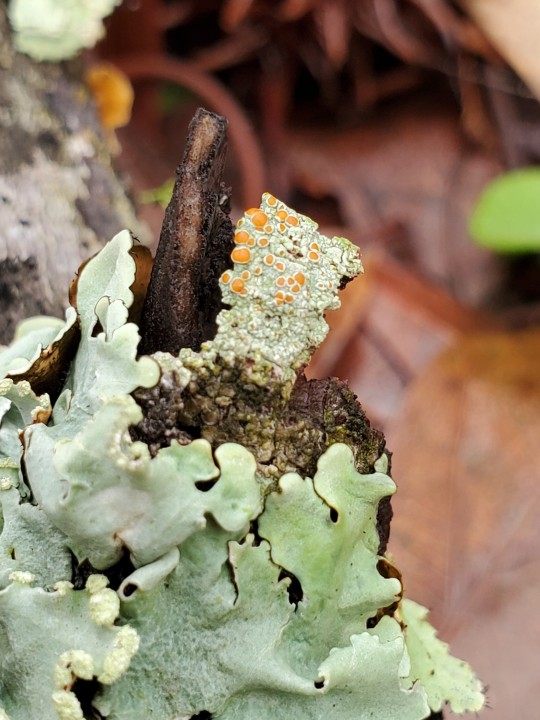
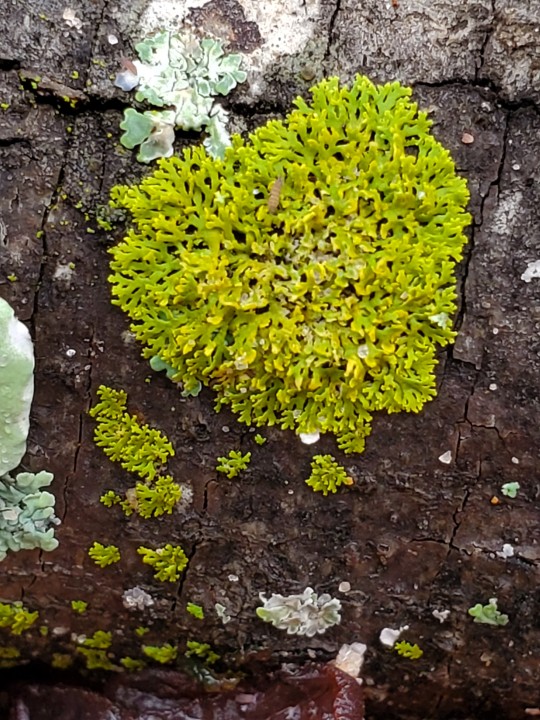

Little Lichens!!
A selection of the very smallest lichens I found in the park today. Featuring:
Golden-eye lichen 》 Teloschistes chrysophthalmus in images 1-4
Bloodstain lichen 》 Haematomma genus in images 5 & 6
Candleflame lichen 》 Candelaria concolor in images 7 & 8
Well, this my first post in a few weeks. Spring semester started and has me doing a lot of work and today I begin packing for a move. I am quite overwhelmed at the moment and can't make any promises as far as posting consistently or at all until things slow down for me, but we'll see how it goes. Enjoy these bonus pictures of the pond in the meantime. Mush love to all. 🍄💛


Southeast Texas, 26 Jan. 2024
#amatuer mycology#mushroom hunting#mushrooms#mycology#fungi#mushrooms of texas#texas mushrooms#wild fungi#fungi of texas#fungarium#foraging#pond#green algae#lichen#little lichens#lichenology#goldeneye lichen#bloodstain lichen#candleflame lichen#lichen of texas#lichen identification#lichen species#species identification#special interest
26 notes
·
View notes
Text

🌿💧
#garden photography#nature photography#nature#photographer#photography#photooftheday#my photos#nature photoset#naturecore#cottagecore#green aesthetic#landscape#terrarium#green algae#fish#artists on tumblr#animals#trees and forests#sea life
33 notes
·
View notes
Text

via
#nature#photography#green#plants#water#river#algae#green algae#lime green#green water#landscape#nature photography
349 notes
·
View notes
Photo

Another watercolor piece. This one features some friendly fellows on a microscopic scale! Also available in my shop as a print:
https://garblegoods.bigcartel.com/
92 notes
·
View notes
Text




earth fact time. meet Valonia ventricosa, also known as the sea grape, bubble algae, or sailor's eyeballs. it's a single-celled organism, and is possibly the largest single celled organism on earth. it has multiple nuclei and billions of chloroplasts - probably even more. sometimes they can get bigger than 2 inches across. and to reproduce, it literally fucking does mitosis like any other cell.
new heaven reef conservation program | wikipedia
#aquatic#earthposting#facts!#algae#green algae#single celled organisms#cells#marine life#sea life#biology#marine biology#valonia ventricosa#bubble algae#earth fact no. 4
20 notes
·
View notes
Text
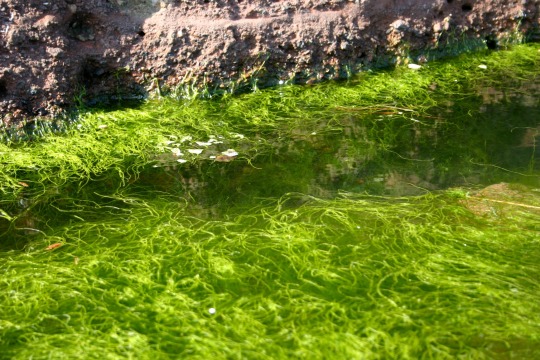
<3
7 notes
·
View notes
Text
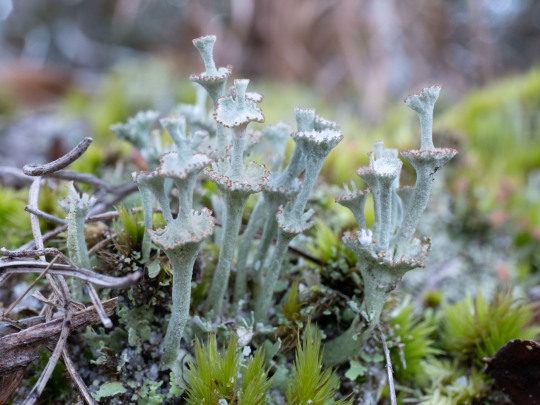
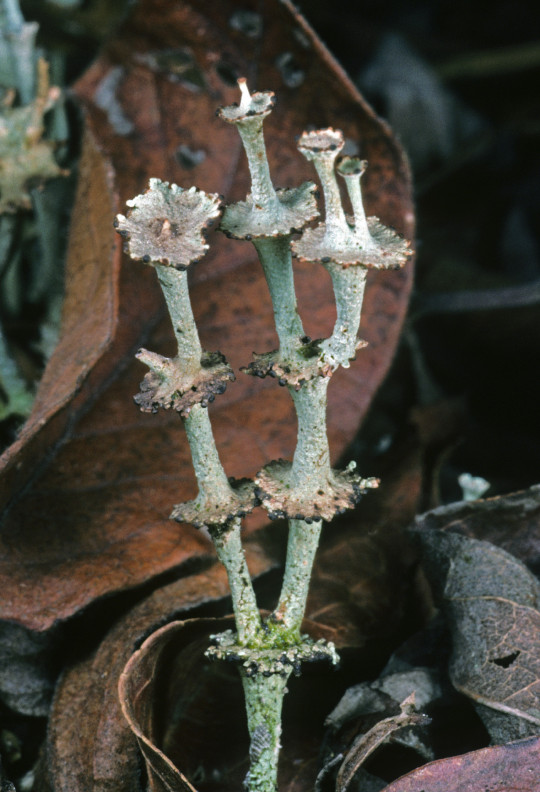

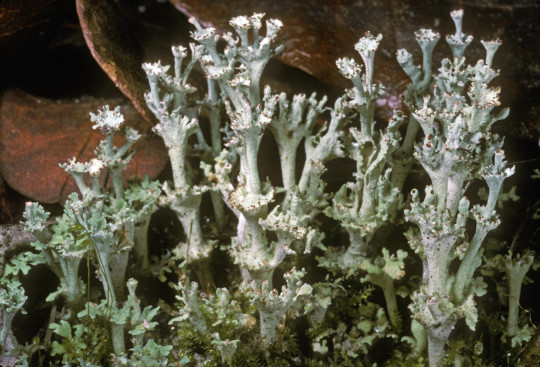
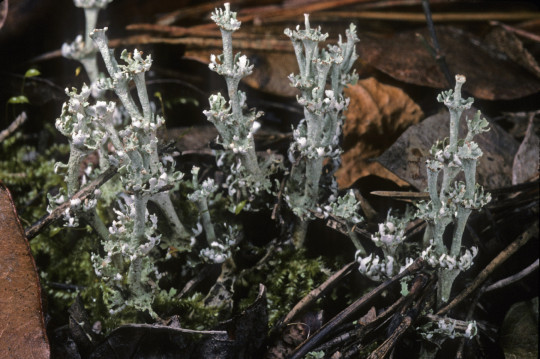


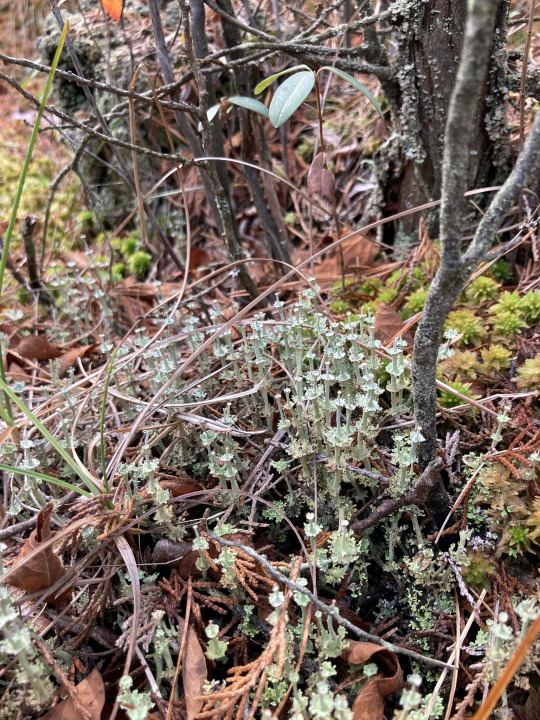
Cladonia rappii
Slender ladder lichen, Rapp's cup lichen
You know that one friend you have who is just always like, annoyingly extra? Like they just kinda have to out do everyone else, even on things that don't even really matter. And you love them and you know there isn't anything inherently wrong with wanting attention or whatever but part of you is just always like . . . why? That's C. rappii for me. Like yes we get it--you don't just have cups, you have stalks on cups on stalks on cups on cups. Very nice, we all see it. This Cladonia lichen has a basal thallus made up of notched squamules, and a secondary thallus made up of podetia 3-11 cm tall. These podetia are often branched, and have centrally proliferating cups which grow in tiers up to 16 flared, shallow cups stacked on top of each other! The edges of the cups are upturned and toothed. The surface of the podetia is bark-like or squamulose, and gray-green to brown in color. You can find C. rappii's extravagant self growing on sandy soils and rotting wood in costal and tropical localities, outdoing its compatriots for no apparent reason besides that that's just how they are.
images: source | source
info: source | source
#lichen#lichens#lichenology#lichenologist#mycology#ecology#fungi#fungus#symbiosis#symbiotic organisms#green algae#biology#botany#bryology#phycology#life science#environmental science#natural science#nature#naturalist#beautiful nature#weird nature#trypo#trypophobia#Cladonia rappii#Cladonia#Cladonia lichen#I'm lichen it#lichen a day#daily lichen post
148 notes
·
View notes
Note
Are fungi or mushrooms considered plants? I've heard mixed things & thought you'd have some insight about it. Really love ur ivy concepts!!
I’m not going to just say No! and move on because the truth (at least to me) is REALLY INTERESTING. I drew this out, here’s a few billion years summed up with jokes!
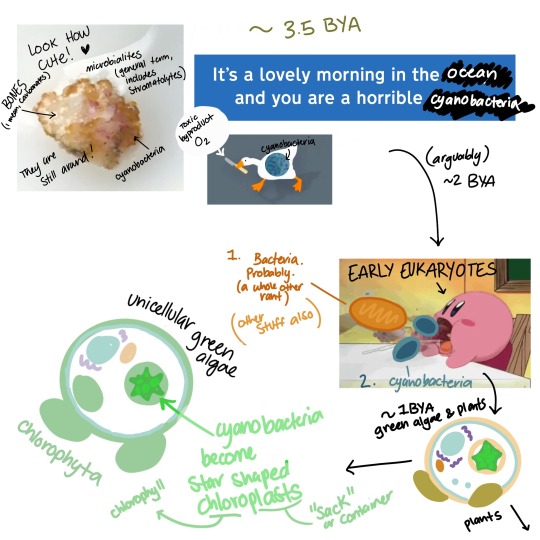
Ok. More than 3.5 BYA. You are a bacteria, living in the oceans (which are blood red but that’s a whole Other Thing). You are a cyanobacteria, you live in big gooey colonies with your best friends and you decide “hey, it would be cool if I could do photosynthesis and get even more energy after I eat the sugars” Which was generally considered a Bad Move, because you made oxygen at the end which is super toxic. To all life. Really bad decision (the oceans helped). Instead of wiping out all life by being horrible and toxic, you actually build the ozone layer and make way for a whole bunch of new guys who can use oxygen (oxygenic respiration).
Now we have eukaryotes depicted as Kirby. This is because they are Like That and when they ate cyanobacteria they didn’t always kill them, and over time they just became chloroplasts. Now they can do photosynthesis. The mitochondria was a similar process that happened first. Some plankton still do this and just… have a guy they didn’t eat all the way.
So we have eukaryote Kirby with chloroplasts. That will split to plants and green algae, here’s where the fungi come in!

The last common fungal ancestor was a parasite of a single called green algae or ancestor, things kind of overlap ranges. So you are a closer “cousin” to fungi than fungi are to plants!
I included this whole thing because I study lichens, and two of the partners in that symbiosis are fungi and/or cyanobacteria. That’s crazy! They were parasites and went and did their own thing and some decided to be symbiotic later! With plants too, they are still pathogens and parasites and so on but doesn’t it seem like living inside a thing that originated by eating all your shit would be a good idea. But lichens have lasted more than 400 million years so who am I to say. And plants have a lot of fungal pathogens but may not have made the transition to land without fungi and would not exist without them.
I could go on. This stuff is my main interest for my scientific career (paired down here ofc) hope this was more interesting than just saying “no!” : )
Bonus: mushrooms are ‘fruiting bodies’ or ‘basidia’ of one division of fungi, the basidiomycetes (buh-sid-ee-oh-my-seats)! ascomycetes (ass-co-my-seats) are usually the cup-shaped ones, not technically mushrooms. I think colloquially mushrooms is used for “edible” fungi and ‘toadstools’ are non-edible.
#asks#botany#fungi#fungi are not plants#they are worse#(affectionate)#green algae#endosymbiosis#chloroplasts#mushrooms#mycology#phycology#phytology
82 notes
·
View notes
Text
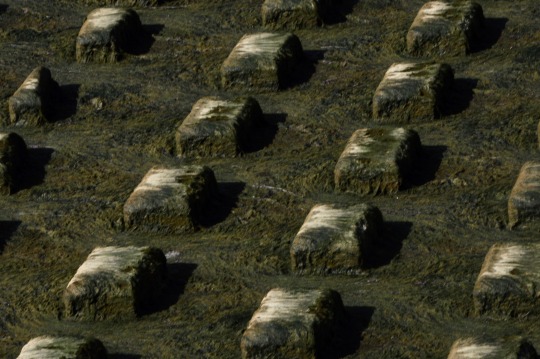
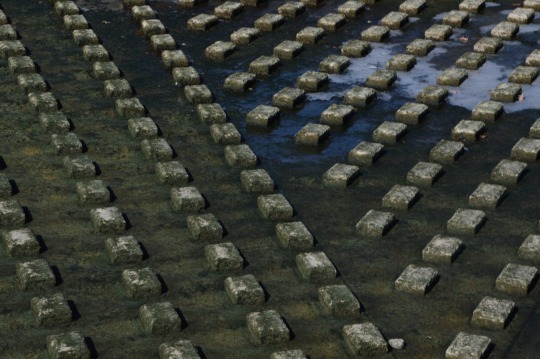
#photography#photographers on tumblr#feburary 2024#nikon d3200#nikon#green algae#water filtration plant
9 notes
·
View notes
Text

Solaris, 01.08.2022
Masovia
#masovia#mazovia#mazowieckie#mazowsze#solaris#green#lush#trees#river#green algae#nature#canon#photographers on tumblr#canon photography#photography
54 notes
·
View notes
Text

8 notes
·
View notes
Text
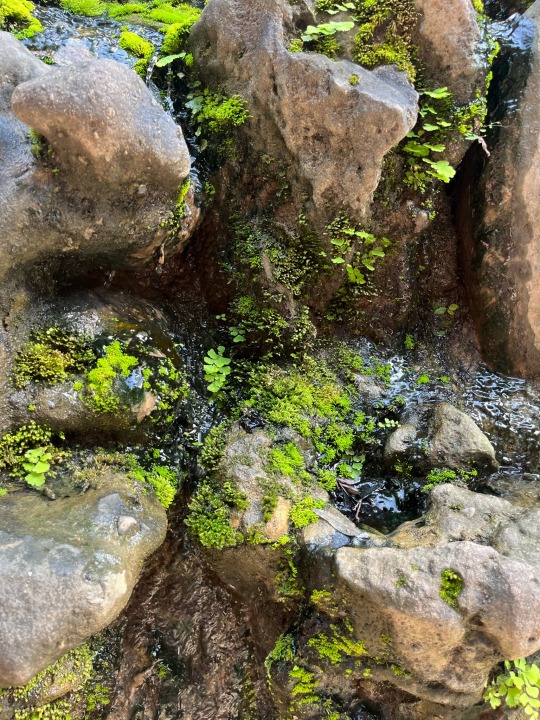


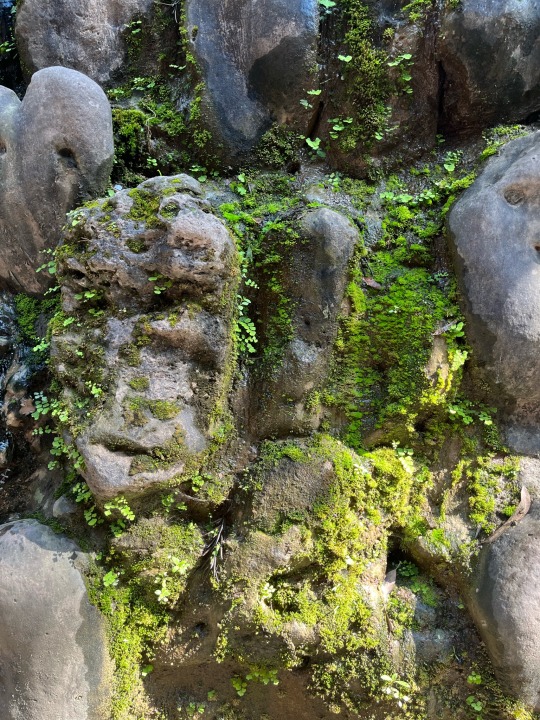
9 notes
·
View notes